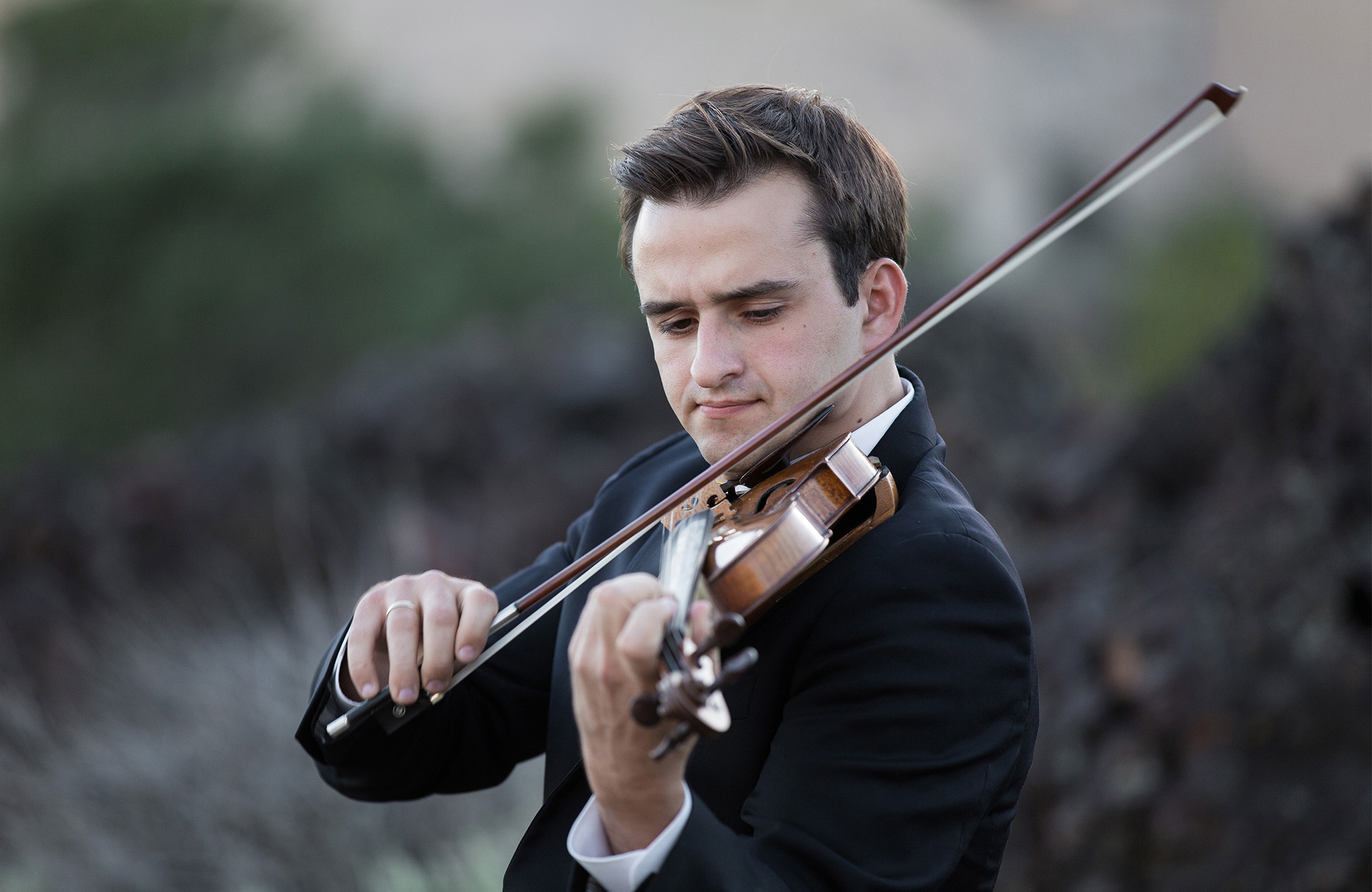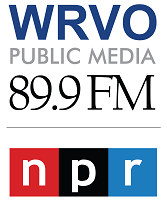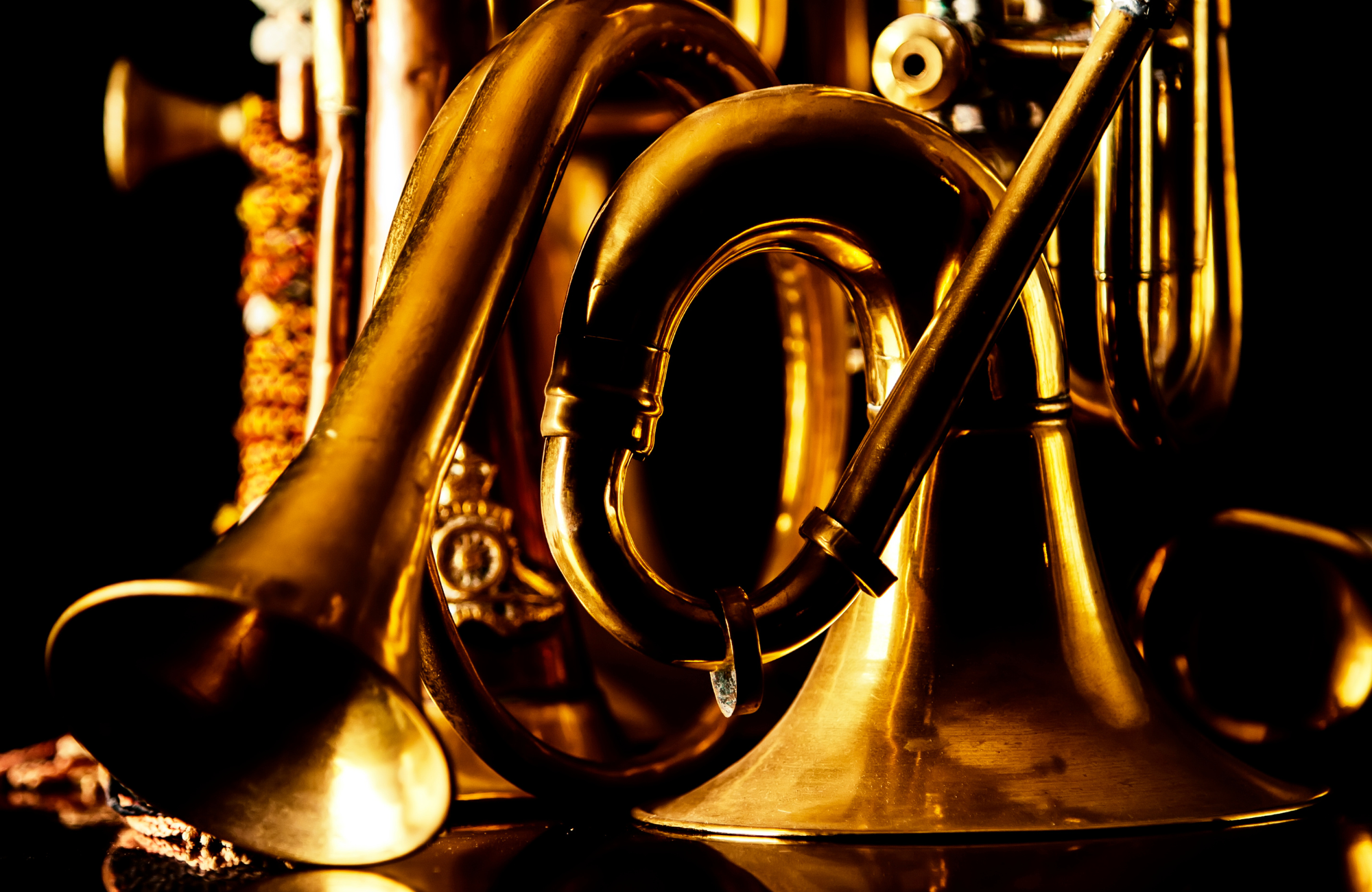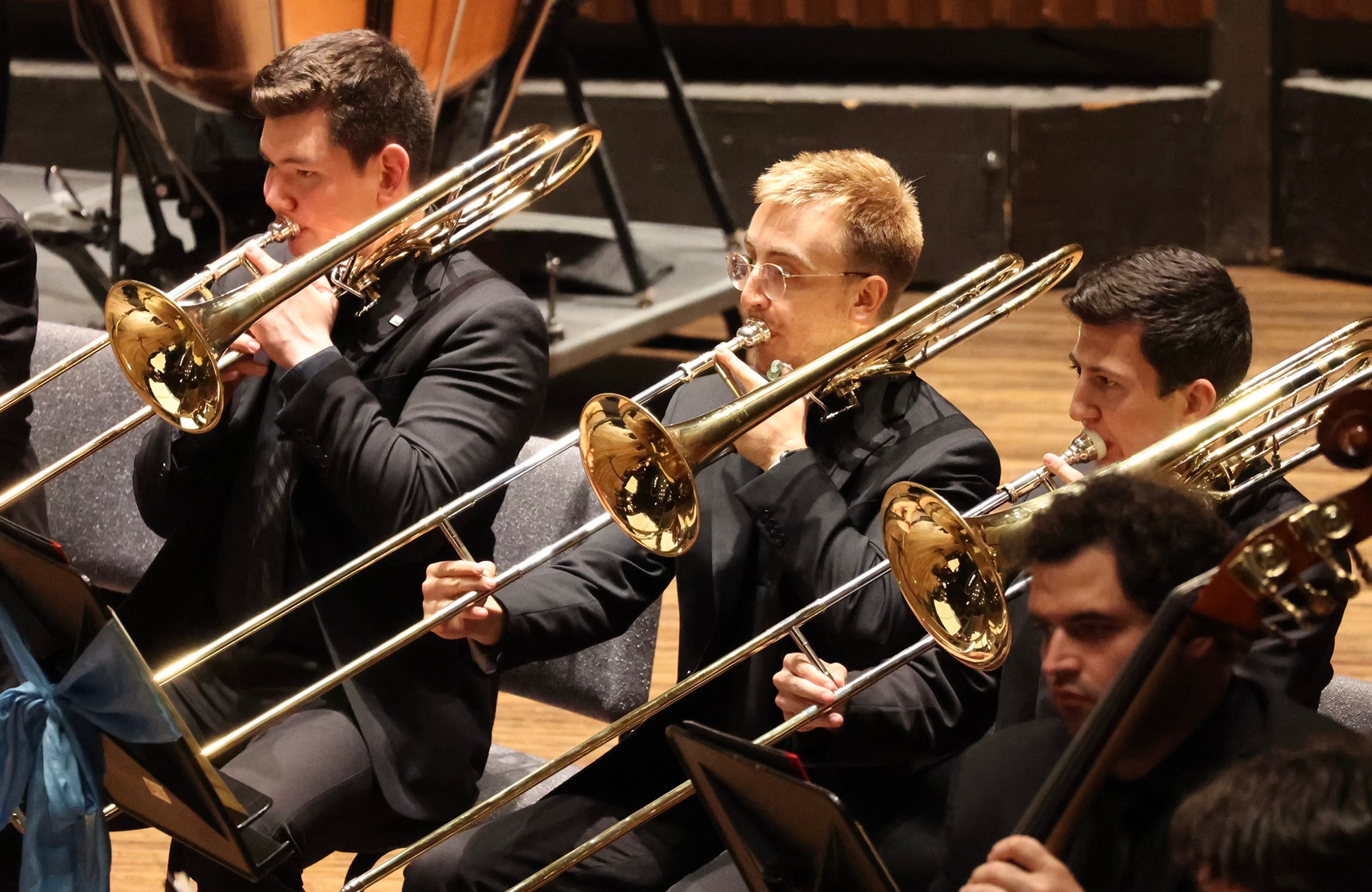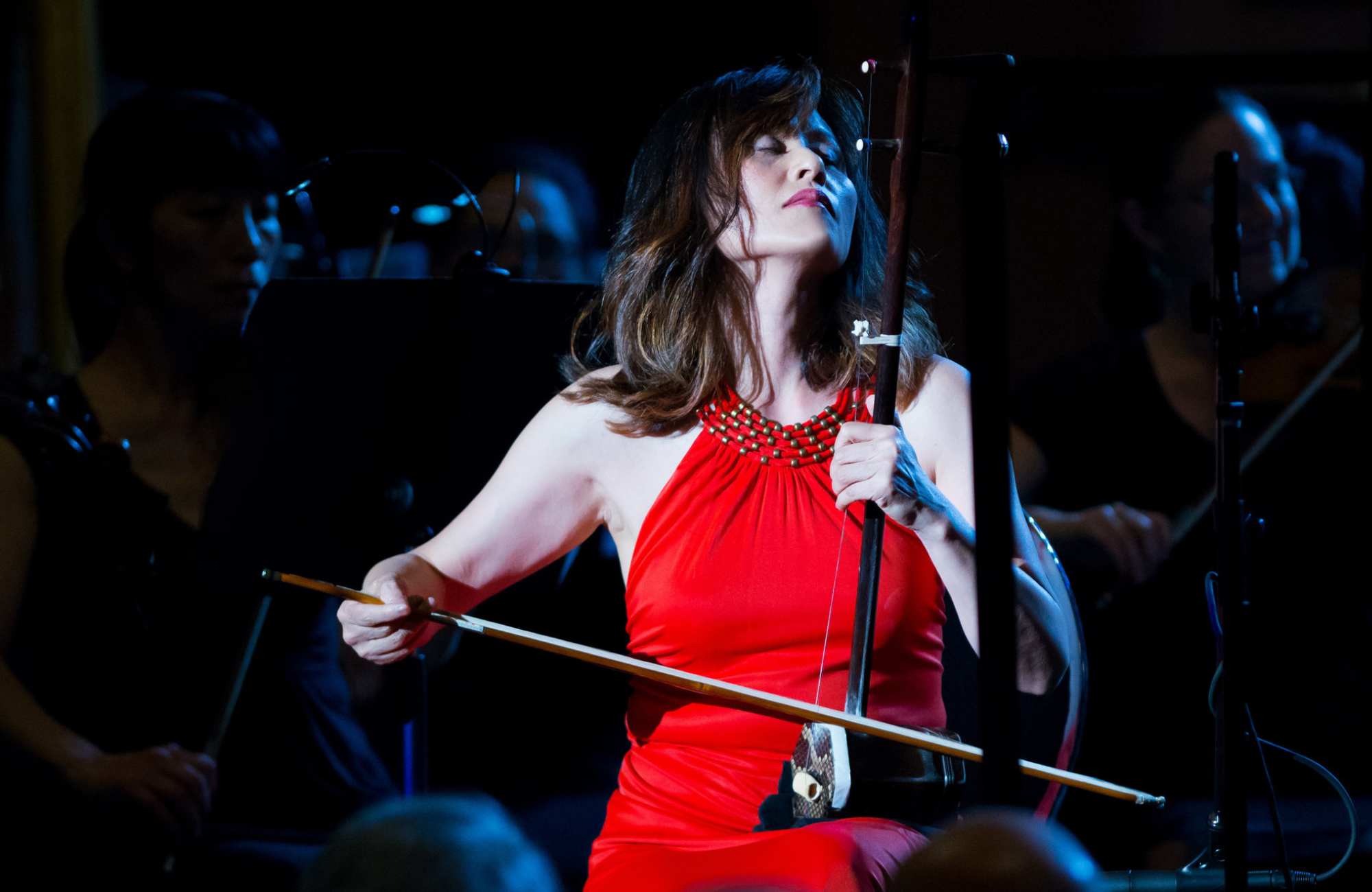Sought-after violinist Will Hagen returns to play Korngold’s Violin Concerto in D Major, the first non-film music he wrote after the defeat of Hitler in World War II. The rest of the program highlights pieces written by film composers and music made famous on the big screen, including the opening fanfare of Also sprach Zarathustra from “2001: A Space Odyssey.”
Click here for information about the Oncenter’s accessibility options.
PROGRAM
WAXMAN: Creation of the Female Monster, from The Bride of Frankenstein
ABELS: Tribute
KORNGOLD: Violin Concerto in D Major, Op. 35 ![]()
STRAUSS: Also sprach Zarathustra, TrV 176, op.30 ![]()
Thanks to our generous sponsors!
Robert & Vicki Lieberman
LARRY’S LISTENING RECOMMENDATIONS
PROGRAM NOTES
For as long as there have been movies in theaters, music has served to heighten our emotions, to prepare us for what is going to happen (and to surprise us when things go awry), and to illuminate characters while we’re watching. But while film and music are intricately entwined, the terms “movie music” and “movie composers” are ambiguous. That’s because of the numerous ways music has been incorporated into the cinematic experience. In the early days of silents, the music was often improvised by a pianist or organist in the pit; but increasingly, especially after sound films ...
For as long as there have been movies in theaters, music has served to heighten our emotions, to prepare us for what is going to happen (and to surprise us when things go awry), and to illuminate characters while we’re watching. But while film and music are intricately entwined, the terms “movie music” and “movie composers” are ambiguous. That’s because of the numerous ways music has been incorporated into the cinematic experience. In the early days of silents, the music was often improvised by a pianist or organist in the pit; but increasingly, especially after sound films came into prominence, movies included carefully (or carelessly) planned scores. Sometimes, bits and pieces of pre-existing music (often the classics) were thrown together (I’m sure I’m not the only person in the hall who learned Liszt’s Les Préludes from Flash Gordon). Sometimes, composers were asked to write something new. Sometimes, those composers were specialists in the genre; sometimes, they were composers with substantial concert-music experience. Tonight’s concert, “Masterworks and the Movies,” celebrates that ambiguity with four works, each connected in a different way to the world of film.
We begin with music written explicitly for a film soundtrack: The Creation of the Female Monster, from the 1935 Bride of Frankenstein. A follow up to Frankenstein (1935), The Bride of Frankenstein is heralded as one of the most successful sequels in film history—less, perhaps, because of its creaky script and acting than because of its LGBTQ+ themes, which have increasingly fascinated both viewers and scholars. And, of course, because of the exceptional quality of its soundtrack, by Franz Waxman (1906–1967).
Waxman was among the wave of composers, many of them Jewish, who fled Europe in the 1930s and 1940s. He ended up in Hollywood where—along with fellow émigrés Erich Korngold, Max Steiner, and Miklós Rózsa—he helped create the so-called “Hollywood Sound.” Extremely flexible, Waxman (who won Academy Awards in two successive years) seemed comfortable with whatever was thrown at him, from horror movies to melodramas, from historical epics to psychological thrillers, from war films to screwball romances. Although he had worked in various ways in the film industry before, Bride was the first film for which he had full musical responsibility. It made an indelible mark.
Tonight’s excerpt serves as the background to the film’s climactic scene. Here, in a gothic castle laboratory, Henry Frankenstein and the mad Doctor Pretorious gather up electricity from a thunderstorm to animate the body they’ve chosen as a mate to tame the rampaging monster. The spooky music may well sound familiar, even if you’ve never seen the movie—but that’s largely because Waxman’s score has had a profound influence on composers for the ninety years since then. In any case, with the continuous pounding of its ominous timpani (the heart of the not-yet awakened bride, fabulously played by Elsa Lanchester), its swooping string lines, its electric sparks, and its mounting tension, it is music that will evoke the scene even if you’ve never seen the film.
As I’ve said, Austrian-born Erich Wolfgang Korngold (1897–1957) was another of the European composers who emigrated to Hollywood. A child prodigy on the order of Mozart and Mendelssohn, he was admired as a teenager by Mahler and Richard Strauss. By the time he was 23, his opera Die Tote Stadt had made him a major name around the world. Starting in the 1930s, he wrote film scores as well, shuttling between Europe and the United States. Fortunately, he was in Hollywood working on Robin Hood (coincidentally, an anti-fascist film disguised as a historical romance) when the Germans moved into Austria; and he settled permanently in the United States, where he committed himself to working exclusively on film music until the German defeat.
After the war, he returned to non-film music, producing his two greatest works for the concert hall: his Symphony in F-Sharp Minor and tonight’s offering, his 1945 Violin Concerto. The origin of the Concerto’s thematic material is vexed. It’s often said that it was taken from four movie scores—Another Dawn, Juarez, Anthony Adverse, and The Prince and the Pauper. But it’s quite possible that it was the other way around, that the films borrowed themes from a Violin Concerto he was already conceiving—or that the Concerto and the film scores developed in tandem. In any case, tonight’s soloist Will Hagen points out that while in certain ways it’s an “American” work, Korngold “definitely has one foot in Europe.” For this gloriously orchestrated concerto has its roots in post-romantic Viennese classical music, offering the sweep and harmonic richness of Mahler rather than the lean sass of Gershwin. It’s tied in other ways to Europe as well. It’s dedicated to Alma Mahler Werfel, Mahler’s widow; and it was inspired by two refugee violinists. Bronislaw Huberman originally asked Korngold to compose it, and Jascha Heifetz (who worked with Korngold to increase the difficulty of the solo part) eventually premiered it.
When the Violin Concerto was introduced, it got scathing reviews from some more snobbish critics, who (clueless about the complex relationship between Hollywood and European classical music) accused it of being too cinematic. Audiences, however, were less prejudiced, and over the years, this has arguably become the most beloved violin concerto of the post-war period. For good reason: in terms of sheer melodic beauty, it stands with the Barber Concerto at the top of the twentieth-century repertoire.
Yet as Will reminds us, it’s not simply a pretty work. In fact, its more perplexing moments (for instance, the “harmonically challenging” cadenza) initially tripped him up. When he was first getting to know the piece, he was confused by its stylistic shifts. “It starts out unbelievably beautifully. And then, all of a sudden, there are all these major sevenths, minor ninths, big intervals that are, on the face of it, kind of ugly. And when I heard certain recordings, the Concerto just made no sense to me. ‘Why did he kill that gorgeous melody?’: That was my thinking at the time.”
But his understanding changed when he finally began to play it. “I got really into the movie side of things and the old-school, black-and-white Hollywood sound.” And he realized it was a matter of dramatic contrast. “All of a sudden the music goes ‘Whoa!’ But if you make sense of it and show the audience, ‘This is a moment of confusion; this is a moment of doubt; this is a moment of this, of that’—then your next melodic moment becomes so startlingly beautiful.”
Besides the melodic beauty and the dramatic contrasts, the concerto has its share of virtuoso thrills, too. You may remember that, at the orchestra’s last Masterworks before the Covid disruption, Will performed the Paganini First Violin Concerto, which can stand almost as an encyclopedia of technical difficulty. “In terms of purely technical challenges, there are few things that any concerto would have that the Paganini does not.” And yet the Korngold competes with it “in terms of pure athleticism and speed of the notes. The end of the last movement is borderline unplayable because of how ridiculously fast it gets. Wild, crazy, crazy!”
Does Will have any advice about how we should listen? “I’ve never encountered an audience that didn’t love it. It’s just an awesome piece. But I think that it’s even better when you can just get yourself in that golden age of Hollywood mood.” That will not be hard to do.
Like Korngold, Michael Abels (b. 1962) is known for both his film scores (most famously Get Out, Nope, and Breaking) and his concert works (including the Pulitzer-Prize winning opera, Omar, co-written with Rhianna Giddens). Like Korngold, too, he came to film music after earlier success as a composer of other works: his first film score, for Get Out, wasn’t composed until he was in his fifties. He’s a remarkably eclectic composer, inspired by jazz, hip-hop, gospel, and world music (especially African music) as well as by Western art music—and his concert music has been premiered by performers ranging from Hillary Hahn to Doc Severinsen.
Unlike the Korngold Concerto, though, Abels’s 2001 Tribute has no direct connection to movie music. Commissioned by the National Symphony Orchestra, it’s a brief response to the September 11 attacks. It begins quietly with rustling string figures, soon overlaid with chorale-like music on the horns and clarinets and eventually challenged by woodwind shrieks and distant fanfares. The music slowly reaches a proud, even defiant climax—after which it quickly dies away. On a concert consisting largely of fairly spectacular music, Tribute stands out as a sober moment of reflection.
Our closing work is the most familiar on the program: the 1896 tone-poem Also Sprach Zarathustra (Thus Spake Zarathustra), by Richard Strauss (1864–1949). Strauss is the one composer on the concert who didn’t write specifically for the movies (although he did rearrange his opera Der Rosenkavalier to be played by a live orchestra during a silent version of the work). But Also Sprach Zarathustra nonetheless provided one of the most famous bits of cinematic background when Stanley Kubrick chose its opening sunrise for his 2001: A Space Odyssey—a choice from which the world has never quite recovered. Or, at least, from which the work has never quite recovered: There are many listeners who know Strauss’s piece only from that excerpt. In fact, though, as conductor Larry Loh puts it, Also Sprach Zarathustra is “the most inspiring and interesting of Strauss’s tone poems”—and it’s brimming with the kind of orchestral ingenuity we get from Strauss at his best.
A tone poem (or symphonic poem) is an orchestral form of program music, music that reflects some non-musical source (say, a poem or painting). Strauss’s are among the most popular in the canon, and most of them clearly represent events (say, the thunderstorm in An Alpine Symphony) or the psychological states of characters (Don Juan’s passion in Don Juan). Also Sprach Zarathustra, anchored in philosophical discussion, doesn’t quite fit in with the others. Yes, the work has a basic trajectory, set out in the score by Strauss when he titled the work’s nine primary sections:
“Sonnenaufgang” (Sunrise)
“Von den Hinterweltlern” (Of the Backworldsmen)
“Von der grossen Sehnsucht” (Of Great Longing)
“Von den Freuden und Leidenschaften” (Of Joys and Passions)
“Das Grablied” (The Song of the Grave)
“Von der Wissenschaft” (Of Science)
“Der Genesende” (The Convalescent)
“Das Tanzlied” (The Dance Song)
“Nachtwandlerlied” (Song of the Night Wanderer)
But while it’s fairly easy, as we listen to the Alpine Symphony, to hear the thunderstorm when it arrives, it’s a lot harder to hear the evocation of “Science” in the music of Also Sprach Zarathustra—and only people with a profound knowledge of Nietzsche will be able to catch the score’s full programmatic meaning. Most listeners, therefore, pretty much ignore the program (a few exceptions aside—that spectacular opening sunrise, the twelve strikes of midnight near the end) and listen to Also Sprach Zarathustra as they would listen to absolute music, music without a program.
From this perspective, what’s compelling is the superb orchestration, the opulent melodic content, and the way the thematic material is used, re-used, and developed throughout the piece. That development is key for Larry, whose primary aim this evening is to “make each passage flow into the next, to make all the different phases that it goes through make sense musically, so that people can have an image in their head all the way to the end. You can think of it like in a series of developments, almost like a set of variations.” Thus, for instance, the stark three-note ascent (often called the “World Riddle” theme) that launches the famous fanfare is, Larry says, “everywhere” in the piece. It’s most evident at the tremendous climax half-way through (far grander, as Larry points out, than the more familiar opening) and at the end; but it’s elsewhere as well, including in the complex fugue that represents “Science.”
Still, whether you listen to it as a philosophical treatise or as pure music, you’ll experience one of the greatest orchestral showpieces of the nineteenth century. It begins in near silence: a quiet pedal point on the note C in the lowest register, played by double basses, organ, percussion, and contrabassoon. That sound opens out into to the famous sunrise fanfare. When played out of context—and sometimes even in live performances—the fanfare can sound bombastic. For Larry, care with dynamics and articulation gives it a different feeling, “glimmers of light gradually coming across the horizon and coming back, rather than pounding and aggression.” Played this way, it sets up the whole piece—and doesn’t undercut the power of the World Riddle theme’s crushing return at the center of the piece.
The sunrise leads to a series of remarkably varied musical adventures. It begins, says Larry, with “a solemn religious passage that divides up our immense string section [incidentally, the largest in the orchestra’s history] into a lush giant, multi-voice choir.” But it also includes some sensuous love music, that dense fugue, a slightly intoxicated waltz, and what seems like a midnight farewell. And it comes to a most curious, unresolved ending. Throughout the work, there’s been a conflict between C Major (often considered to represent nature or the universe) and B Major (often considered to represent humanity). And at the end, we hear an uncertain oscillation between the two: B Major played by the high woodwinds; the low C with which the work began—plucked, and even more quiet that it was at the beginning—on the double basses.
Peter J. Rabinowitz
Have any comments or questions? Please write to me at prabinowitz@SyracuseOrchestra.org
FEATURED ARTISTS

Described as bringing an “artisan storyteller’s sensitivity… shaping passages with clarity and power via beautifully sculpted dynamics… revealing orchestral character not seen or heard before” (Arts Knoxville) Lawrence Loh enjoys a dynamic career as a conductor of orchestras all over the world.
After an extensive two ...
Described as bringing an “artisan storyteller’s sensitivity… shaping passages with clarity and power via beautifully sculpted dynamics… revealing orchestral character not seen or heard before” (Arts Knoxville) Lawrence Loh enjoys a dynamic career as a conductor of orchestras all over the world.
After an extensive two year search, Lawrence Loh was recently named Music Director of the Waco Symphony Orchestra beginning in the Spring of 2024. Since 2015, he has served as Music Director of The Syracuse Orchestra (formerly called Symphoria), the successor to the Syracuse Symphony Orchestra. “The connection between the organization and its audience is one of the qualities that’s come to define Syracuse’s symphony as it wraps up its 10th season, a milestone that might have seemed impossible at the beginning,” (Syracuse.com) The Syracuse Orchestra and Lawrence Loh show that it is possible to create a “new, more sustainable artistic institution from the ground up.”
Appointed Assistant Conductor of the Pittsburgh Symphony in 2005, Mr Loh was quickly promoted to Associate and Resident Conductor within the first three years of working with the PSO. Always a favorite among Pittsburgh audiences, Loh returns frequently to his adopted city to conduct the PSO in a variety of concerts. Mr. Loh previously served as Music Director of the West Virginia Symphony Orchestra, Music Director of the Northeastern Pennsylvania Philharmonic, Artistic Director and Principal Conductor of the Syracuse Opera, Music Director of the Pittsburgh Youth Symphony Orchestra, Associate Conductor of the Dallas Symphony Orchestra, Associate Conductor of the Colorado Symphony Orchestra and Music Director of the Denver Young Artists Orchestra.
Mr. Loh’s recent guest conducting engagements include the San Francisco Symphony, Dallas Symphony, North Carolina Symphony, Baltimore Symphony, Sarasota Orchestra, Florida Orchestra, Pensacola Symphony, Atlanta Symphony, National Symphony, Detroit Symphony, San Diego Symphony, Seattle Symphony, National Symphony (D.C.), Utah Symphony, Rochester Philharmonic, Indianapolis Symphony, Calgary Philharmonic, Buffalo Philharmonic, Albany Symphony and the Cathedral Choral Society at the Washington National Cathedral. His summer appearances include the festivals of Grant Park, Boston University Tanglewood Institute, Tanglewood with the Boston Pops, Chautauqua, Sun Valley, Shippensburg, Bravo Vail Valley, the Kinhaven Music School and the Performing Arts Institute (PA).
As a self-described “Star Wars geek” and film music enthusiast, Loh has conducted numerous sold-out John Williams and film music tribute concerts. Part of his appeal is his ability to serve as both host and conductor. “It is his enthusiasm for Williams’ music and the films for which it was written that is Loh’s great strength in this program. A fan’s enthusiasm drives his performances in broad strokes and details and fills his speaking to the audience with irresistible appeal. He used no cue cards. One felt he could speak at filibuster length on Williams’ music.” (Pittsburgh Tribune)
Mr Loh has assisted John Williams on multiple occasions and has worked with a wide range of pops artists from Chris Botti and Ann Hampton Callaway to Jason Alexander and Idina Menzel. As one of the most requested conductors for conducting Films in Concert, Loh has led Black Panther, Star Wars (Episodes 4-6), Jaws, Nightmare Before Christmas, Jurassic Park, Casablanca, The Wizard of Oz and Singin’ in the Rain, among other film productions.
Lawrence Loh received his Artist Diploma in Orchestral Conducting from Yale, his Masters in Choral Conducting from Indiana University and his Bachelor of Arts from the University of Rochester. Lawrence Loh was born in southern California of Korean parentage and raised in Carlisle, Pennsylvania. He and his wife Jennifer have a son, Charlie, and a daughter, Hilary. Follow him on instagram @conductorlarryloh or Facebook at @lawrencelohconductor or visit his website, www.lawrenceloh.com
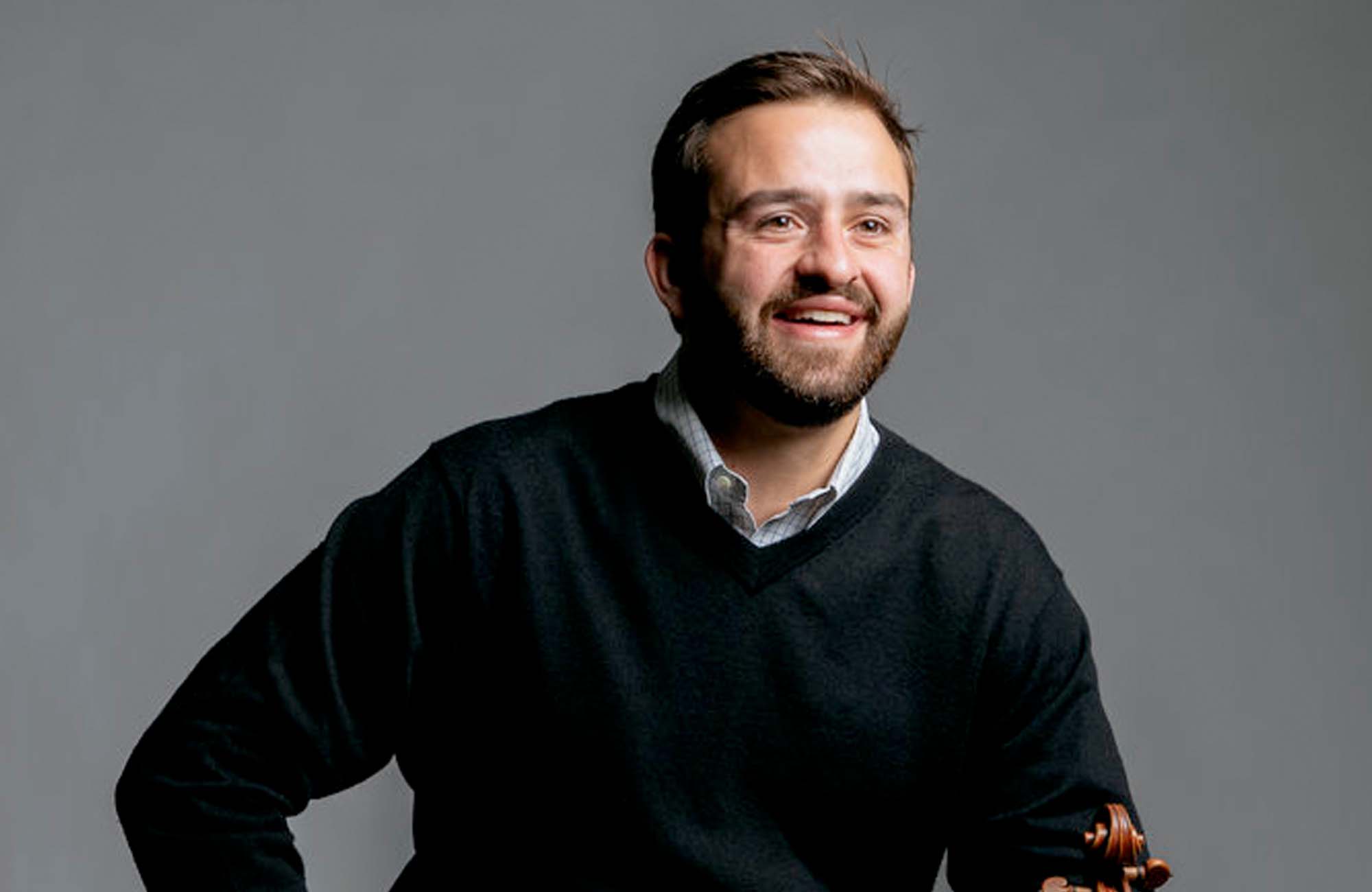
The riveting 30-year-old American violinist William Hagen has appeared as a soloist with many of the world’s great orchestras including the Chicago Symphony, Chamber Orchestra of Europe, San Francisco Symphony, Frankfurt Radio Symphony, and many more. Already a seasoned international performer who has won friends around the world, ...
The riveting 30-year-old American violinist William Hagen has appeared as a soloist with many of the world’s great orchestras including the Chicago Symphony, Chamber Orchestra of Europe, San Francisco Symphony, Frankfurt Radio Symphony, and many more. Already a seasoned international performer who has won friends around the world, William has been hailed as a “brilliant virtuoso…a standout” (The Dallas Morning News) whose playing is “… captivating, floating delicately above the orchestra” (Chicago Classical Review). He was the third-prize winner of the 2015 Queen Elisabeth International Music Competition, one of the highest-ranking Americans ever in the prestigious competition. William performs on the 1732 ‘Arkwright Lady Rebecca Sylvan’ Stradivarius, on generous loan from the Rachel Barton Pine Foundation.
Hagen’s recent performances include appearances with the Rochester Philharmonic and Asheville Symphony, and performances at the Ravinia, Grant Park, Sunriver, and Santa Fe Chamber Music festivals and Tippet Rise Art Center. Hagen’s 2023-24 season highlights include performances for the Chamber Music Society of Fort Worth, Detroit Symphony, a European tour with the Amsterdam Sinfonietta, and collaborations with cellist Andrei Ioniță and pianists Orion Weiss and Albert CanoSmit. This season William offers a new community engagement initiative that combines conversations with local gardening experts with an interactive performance and explores the ways in which music and nature are connected.
William has performed with conductor Nicolas McGegan both at the Aspen Music Festival and with the Pasadena Symphony, and made his debut with the Oregon Symphony under Carlos Kalmar, performed with the Brussels Chamber Orchestra in Beijing and at the Aspen Music Festival with conductor Ludovic Morlot, and played recitals in Paris, Brussels, and at the Ravinia Festival. Collaborations include those with Steven Isserlis at the Wigmore Hall, with Tabea Zimmermann at the Beethovenhaus in Bonn, with Gidon Kremer, Steven Isserlis, and Christian Tetzlaff in Germany, and in New York City with the Jupiter Chamber Players.
Since his debut with the Utah Symphony at age nine, William has performed with conductors such as Marin Alsop, Christian Arming, Miguel Harth-Bedoya, Michel Tabachnik, and Hugh Wolff. A native of Salt Lake City, William first heard the violin when he was 3 and began taking lessons at age 4 with Natalie Reed, followed by Deborah Moench. At age 10, he began studying with Robert Lipsett at the Colburn School in Los Angeles, where he studied until the age of 17.
After studying at the Juilliard School for two years with Itzhak Perlman, William returned to Los Angeles to continue studying with Robert Lipsett at the Colburn Conservatory. He then went on to study at the Kronberg Academy in Germany with Christian Tetzlaff. William is an alumnus of the Verbier Academy in Switzerland, the Perlman Music Program, and the Aspen Music Festival.


